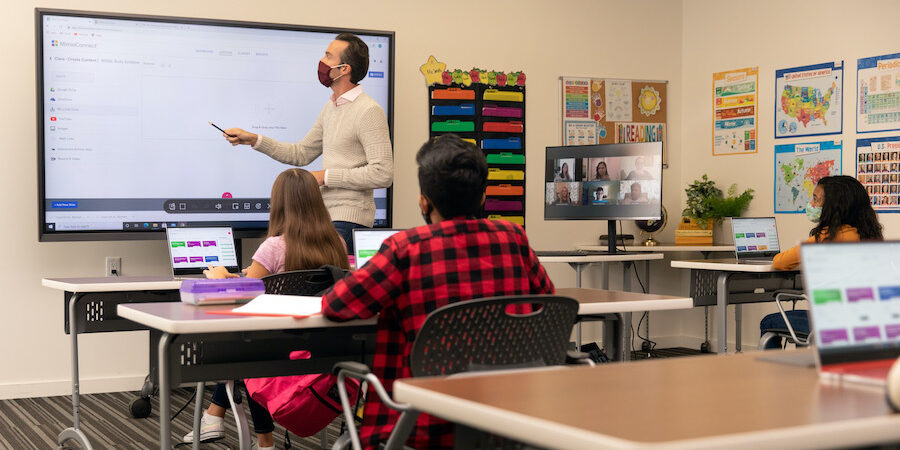Expert Primary Science Tuition Singapore for Understanding Complex Concepts
Wiki Article
A Comprehensive Guide to the Different Knowing Approaches in Key Scientific Research Direction
The exploration of diverse knowing approaches in main science instruction presents a possibility for teachers to enhance student involvement and understanding significantly. By analyzing hands-on discovering techniques, inquiry-based techniques, and collective strategies, we can identify effective techniques that provide to different learning styles.
Hands-On Understanding Techniques
Hands-on learning techniques play a critical duty in primary science guideline, engaging trainees in active expedition and trial and error. These methods allow learners to engage directly with materials and sensations, promoting a deeper understanding of clinical ideas. By making use of manipulatives, designs, and real-life experiments, educators produce an environment where students can observe, hypothesize, and evaluate their ideas.Such methods not just improve comprehension however additionally cultivate crucial reasoning and problem-solving skills. When pupils join activities like developing easy machines, growing seeds, or performing chemical responses, they are urged to ask questions and seek answers via their very own observations. This experiential approach aids to debunk intricate clinical principles, making them a lot more relatable and accessible.
In addition, hands-on learning advertises cooperation among peers, as students often operate in groups to conduct experiments or share searchings for. This team effort not just improves their learning experience yet also creates important social skills. Eventually, incorporating hands-on methods in primary science guideline fosters a long-lasting love of discovering and curiosity concerning the all-natural globe, laying a strong foundation for future scholastic searches in scientific research and beyond.
Inquiry-Based Discovering
Inquiry-based understanding is an educational technique that urges students to ask questions, explore sensations, and create their very own understanding of clinical ideas. This approach changes the emphasis from typical teacher-led instruction to an extra student-centered experience, where students take the initiative in their instructional journey. By promoting curiosity, inquiry-based understanding advertises much deeper interaction with the material, enabling students to check out subjects in a purposeful context.In practice, this approach often involves hands-on experiments, observations, and crucial thinking activities that line up carefully with the scientific technique. Trainees are encouraged to formulate hypotheses, layout investigations, and examine information, which cultivates necessary abilities such as analytic and analytical thinking. The function of the educator in this framework is to facilitate expedition, directing pupils with the questions process while encouraging independent thought and partnership.
Additionally, inquiry-based learning nurtures a sense of ownership over the knowing process, motivating pupils to seek understanding proactively. This technique not only boosts understanding of scientific concepts yet likewise promotes a long-lasting love for knowing, equipping trainees with the skills essential to browse a progressively complex world.
Collaborative Knowing Approaches
Joint discovering methods equip trainees to involve in meaningful communications with peers, promoting a common responsibility for their educational end results. In key science direction, these approaches urge learners to collaborate to check out scientific concepts, solve troubles, and carry out experiments (primary science tuition Singapore). By taking part in team tasks, students can take advantage of varied viewpoints, permitting richer understanding and retention of scientific understanding
One secret element of joint knowing is the emphasis on communication abilities. Pupils must verbalize their ideas, pay attention proactively to others, and discuss ideas, every one of which are vital expertises in both real-world and academic contexts. This social interaction not just enhances their understanding of clinical principles but likewise advertises teamwork and dispute resolution abilities.
In addition, collaborative learning often causes raised inspiration and interaction. When trainees see the value of their contributions within a group, they are a lot more likely to take ownership of their discovering trip. Teachers can promote this process by making organized group jobs that line up with educational program goals while providing advice on reliable partnership methods. In general, incorporating collective discovering strategies in key scientific research instruction grows a vibrant discovering setting that prepares pupils for future academic and social challenges.
Innovation Combination in Scientific Research
The combination of modern technology in primary science instruction enhances discovering experiences by providing cutting-edge devices and sources that sustain numerous mentor techniques, including collective discovering - primary science tuition Singapore. Using digital systems, simulations, and interactive applications enables trainees to engage deeply with scientific concepts, facilitating a much more hands-on technique to discoveringVirtual laboratories, as an example, allow students to perform experiments safely and efficiently, promoting inquiry-based understanding. These tools can simulate real-world scientific circumstances, allowing trainees to envision intricate processes that would certainly be hard to replicate in a traditional class setting. In addition, modern technology promotes interaction and partnership among pupils, as they can share findings and work with each other on tasks through online platforms.
Furthermore, multimedia presentations and educational video clips can enrich lessons by accommodating diverse knowing styles, making abstract principles more accessible. Information analysis devices additionally equip trainees to accumulate and translate clinical information, reinforcing important thinking skills. Generally, the critical incorporation of innovation in main science instruction not only improves engagement however also prepares students for a technologically advanced society, equipping them with essential skills for future clinical ventures.
Differentiated Guideline Strategies
Set apart direction approaches are essential for addressing the varied requirements of learners in key science education and learning. These approaches make it possible for instructors to tailor their mentor approaches to suit differing capacities, passions, and finding out designs within the class. By utilizing separated direction, instructors can create a comprehensive environment that cultivates involvement and enhances understanding of scientific concepts.One reliable technique is to make use of versatile grouping, which allows students to team up visit with peers at comparable ability degrees or with varying perspectives. This technique urges peer discovering and promotes view it now critical reasoning. Additionally, offering selections in jobs can encourage students, permitting them to pick tasks that reverberate with their interests while still fulfilling curricular purposes.
In addition, including tiered jobs is another beneficial method. By developing tasks with differing levels of complexity, teachers can make certain that all pupils are appropriately challenged, regardless of their effectiveness. Using developmental assessments to assess recognizing additional allows teachers to adjust their instructional techniques dynamically, making certain that each student obtains the assistance they need.
Eventually, carrying out differentiated guideline methods in key science education not only boosts student learning outcomes yet also grows an interest for scientific research, preparing pupils for future scholastic quests.

Verdict
In summary, effective key science instruction requires a diverse method that encompasses hands-on discovering, inquiry-based techniques, and collective techniques. The assimilation of technology and differentiated guideline even more satisfies varied understanding styles, cultivating an atmosphere for expedition and critical reasoning. By applying these strategies, teachers can boost pupil engagement and comprehension, inevitably nurturing a long-lasting passion for scientific research and query. Such thorough approaches are vital for creating informed and curious future scientists.The exploration of varied understanding techniques in key science instruction presents a possibility for instructors to boost pupil involvement and understanding substantially.Hands-on discovering methods play a crucial role in main scientific research direction, involving trainees in energetic expedition and experimentation.Inquiry-based discovering is a training technique that motivates pupils to ask questions, investigate sensations, and build their very own understanding of clinical ideas.Joint discovering approaches empower trainees blog here to engage in significant interactions with peers, promoting a common responsibility for their educational results. On the whole, including joint knowing methods in main science instruction grows a vibrant learning environment that prepares trainees for future scholastic and social difficulties.
Report this wiki page